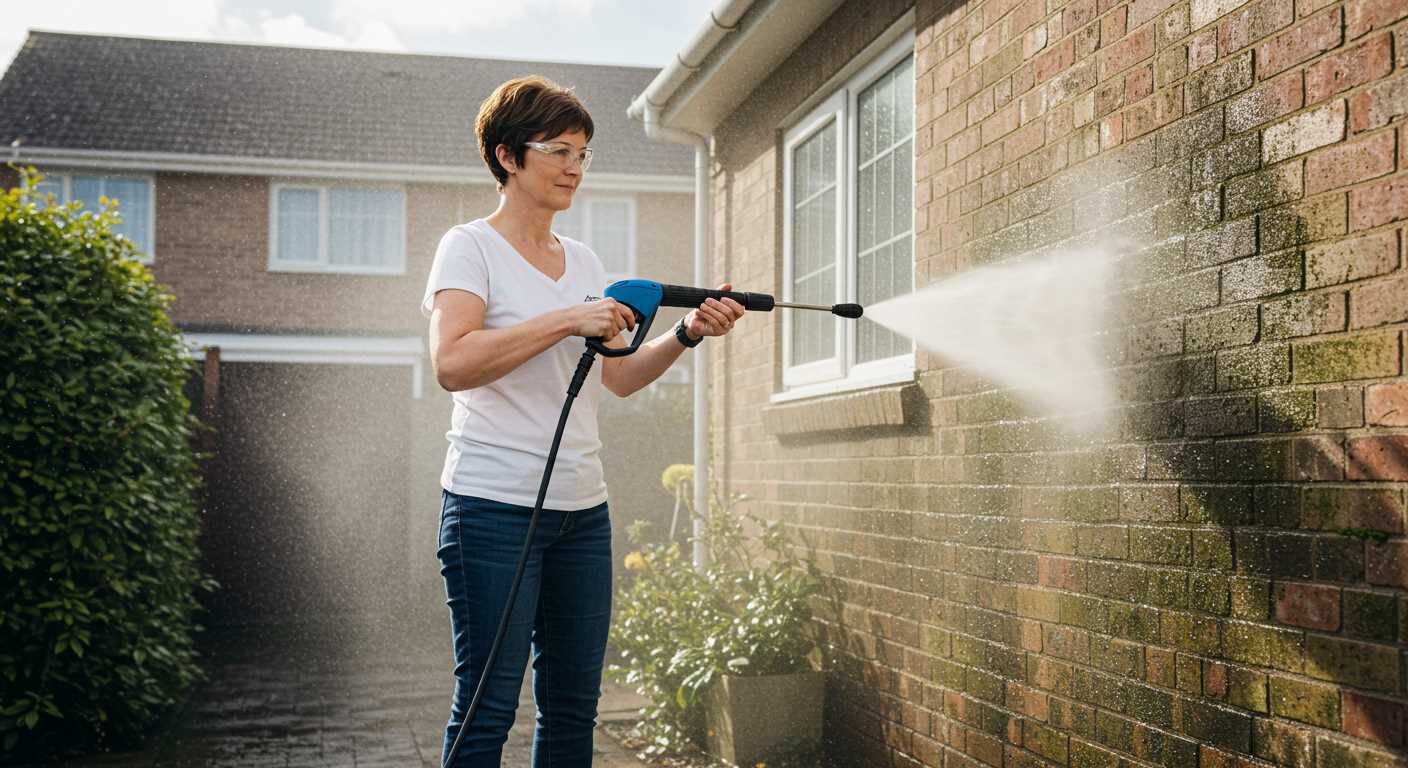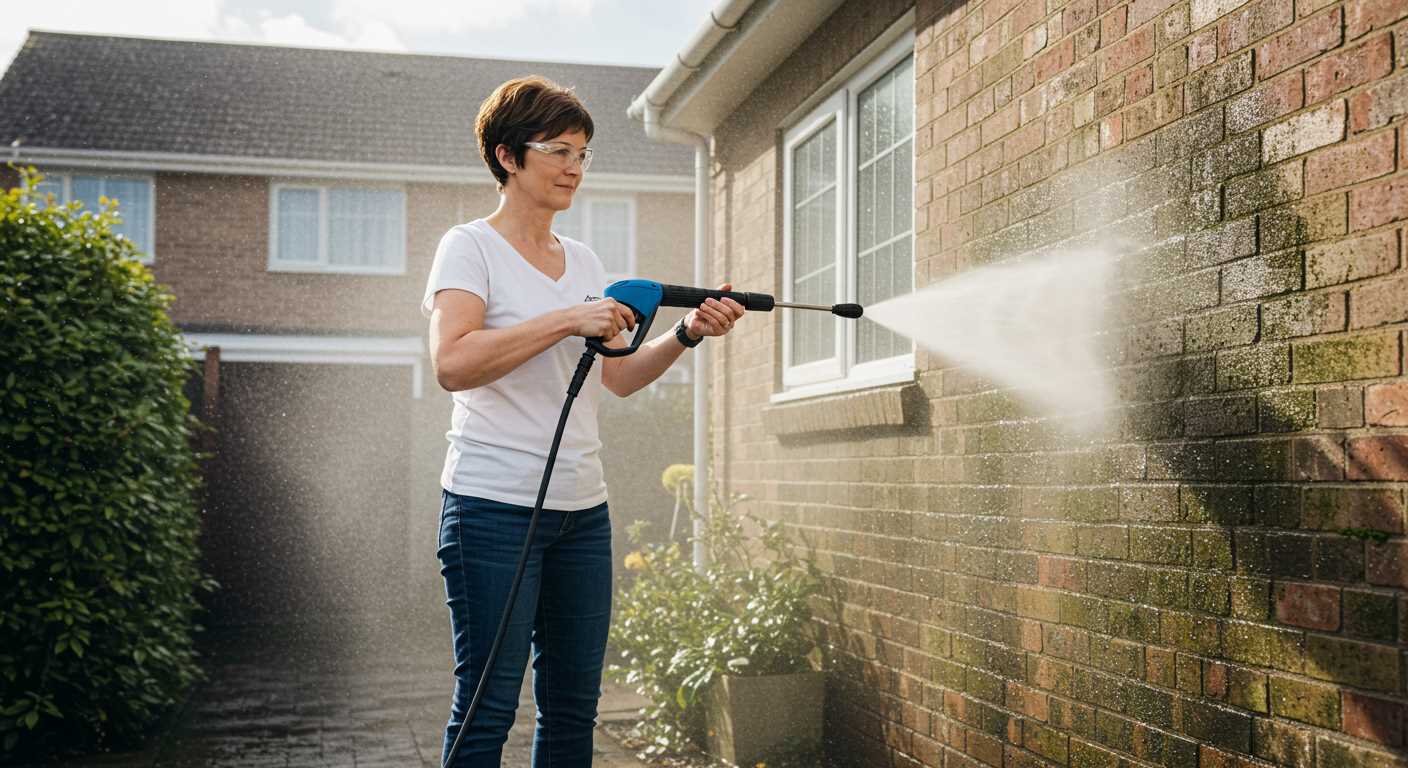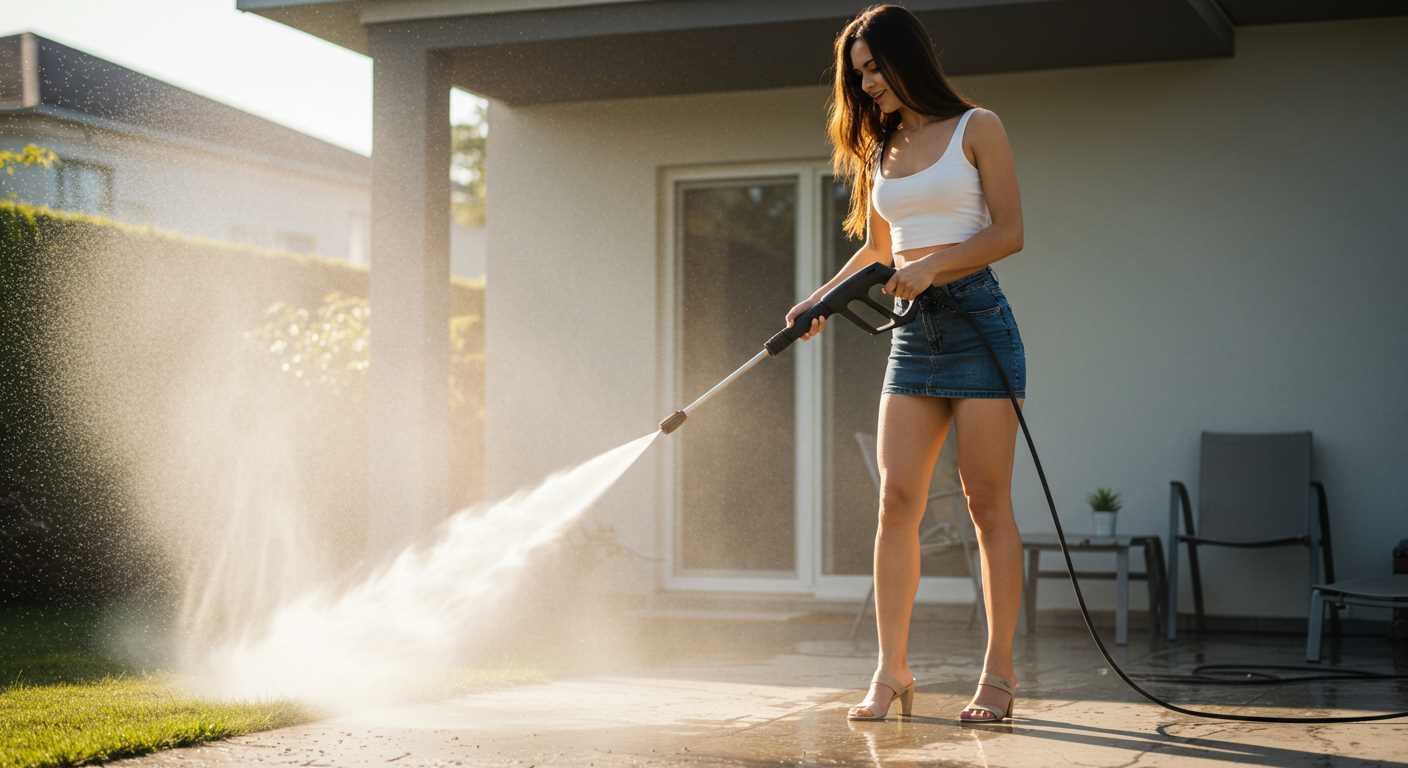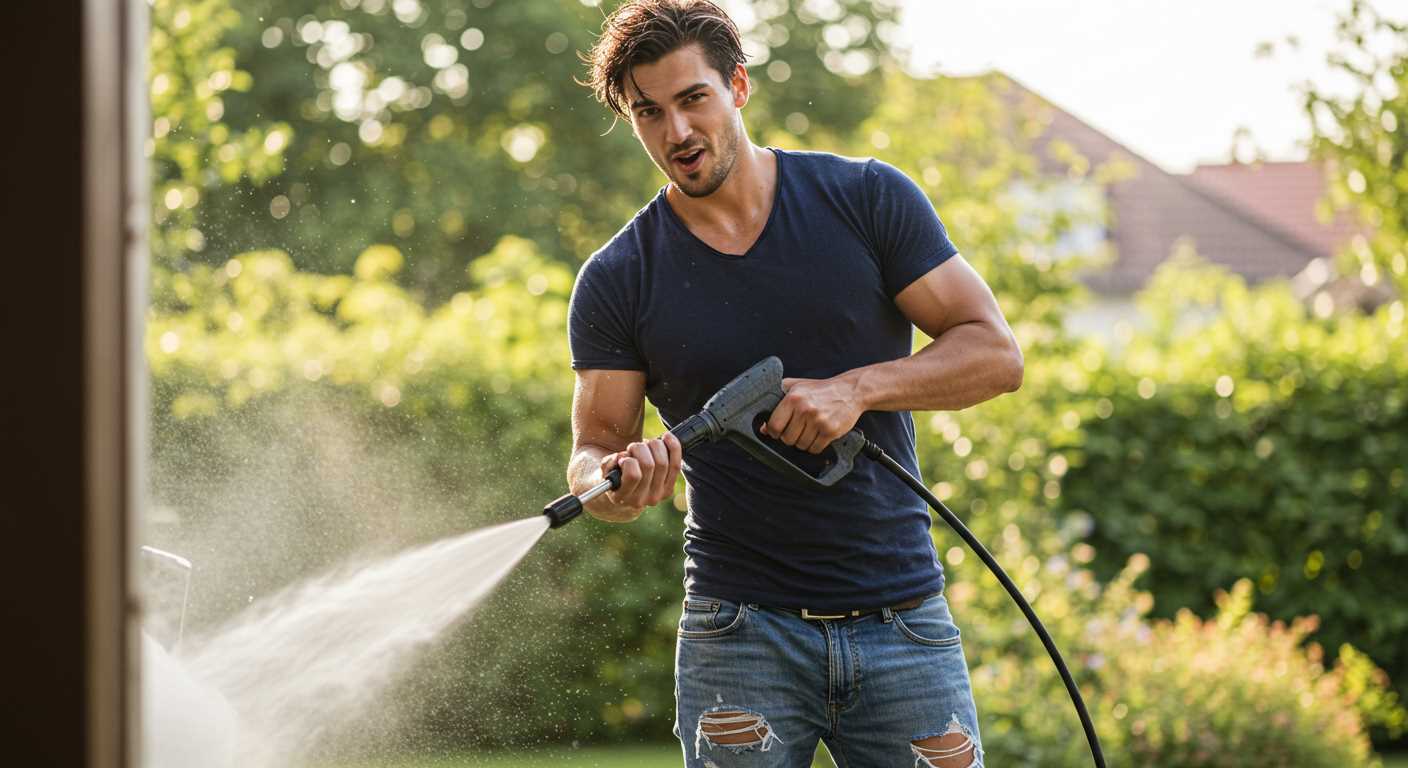




For anyone serious about tackling dirt and grime, grasping the mechanics of high-pressure cleaning devices is fundamental. The heart of these machines is a complex assembly that transforms mechanical energy into a powerful jet of water. When I first started in the cleaning equipment industry, I was amazed by how much efficiency hinges on the right components working in harmony.
One of the key players in this setup is the component responsible for increasing water flow and pressure. It operates by drawing water from a source and using an electric motor or gasoline engine to create high velocity. This process is not just about strength; it’s about precision. Over the years, I’ve seen how different designs impact performance. For instance, triplex designs often deliver a more consistent flow compared to axial types, especially under heavy usage.
Maintenance also plays a critical role in longevity and performance. Regularly checking oil levels, inspecting seals, and keeping the inlet filter clean can prevent costly repairs and downtime. I recall a time when I neglected a minor leak, thinking it wouldn’t affect performance. That oversight led to a major failure down the line, which taught me the value of proactive care.
Understanding the nuances of these cleaning machines can empower you to make informed choices, whether you’re purchasing one or maintaining an existing unit. Over the years, I’ve developed a keen eye for what separates the good from the great in this market, and I’m eager to share those insights with you.
Understanding the Mechanics Behind High-Pressure Equipment
To achieve optimal performance from your cleaning apparatus, it’s crucial to grasp the mechanics at play in its core components. The heart of the system is the component responsible for drawing in fluid and converting it into a powerful jet. The process begins with an inlet valve, which regulates the entry of water from the source. This valve opens when the machine is activated, allowing fluid to flow into the mechanism.
Upon entry, the water encounters a series of pistons or plungers. These elements are driven by an electric motor or a gas engine, creating a compressive force. As the pistons move, they reduce the volume of water, thus increasing its pressure significantly. This pressurised liquid is then directed through a nozzle, where it is released in a focused stream, ready to tackle tough grime and dirt.
Optimising Performance and Maintenance Tips
Regular maintenance can extend the life of these vital components. I recommend inspecting the inlet filter periodically to prevent debris from clogging the system. A clean filter ensures a steady flow, which is essential for maintaining pressure and efficiency. Pay attention to the seals and gaskets; these parts can wear out over time and lead to leaks or reduced performance.
If you notice fluctuations in pressure, check the nozzle for blockages. A clogged nozzle can disrupt the flow and diminish cleaning effectiveness. It’s also wise to use the correct type of detergent for your specific model, as using the wrong chemical can damage seals and internal parts.
Understanding Flow Rate and Pressure
Flow rate and pressure are two critical specifications that determine how effectively your machine cleans. The flow rate, measured in litres per minute (LPM), indicates how much water is delivered, while pressure, measured in bar or PSI, shows the force behind that water. If you’re tackling heavy-duty tasks, opt for a unit with a higher flow rate and pressure rating. My experience has taught me that a balance between these two factors is key; too much pressure with insufficient flow can lead to surface damage, while too little pressure may not effectively remove stubborn stains.
Understanding the Basic Components of a Pressure Washer Pump
To get the most out of your cleaning equipment, it’s crucial to familiarise yourself with its key parts. Each component plays a specific role in ensuring optimal water flow and pressure. Here’s a breakdown of the essential elements:
- Motor: This is the powerhouse that drives the entire system. In gas models, you’ll find a combustion engine, while electric versions rely on electric motors. The choice of motor can significantly affect the performance and portability of the machine.
- Water Inlet: This is where the water enters the system. A clean and functional inlet is vital for preventing clogs. I’ve seen machines struggle due to a blocked inlet, so regular maintenance is key.
- High-Pressure Outlet: After the water is pressurised, it exits through this outlet. It’s important to ensure that the outlet is free from any obstructions to maintain effective pressure.
- Valves: These include the inlet and outlet valves. They control the flow of water through the system. Any malfunction in these components can lead to pressure loss or leaks. Regular inspections can save you from unexpected repairs.
- Pump Head: This houses the pistons and is crucial for pressurising the water. A high-quality pump head can significantly enhance the longevity and efficiency of your equipment. I’ve often recommended models with brass heads for their durability.
- Pistons: These create the pressure by compressing the water. Depending on the model, you may find single or multiple pistons. Multiple pistons can deliver more consistent pressure, which I’ve found beneficial for larger jobs.
- Crankshaft: This component connects to the motor and drives the pistons. A sturdy crankshaft is essential for reliable operation, especially in heavy-duty applications.
Understanding these components can help you troubleshoot any issues that may arise. Consider investing in a petrol pressure washer if you need something powerful for outdoor cleaning tasks. They often feature robust components that are designed for high performance.
In my experience, knowledge about these parts not only aids in maintenance but also enhances your overall cleaning experience. Always refer to the manufacturer’s guidelines for best practices and ensure that you keep your equipment in top shape.
Water Intake and Supply in the Pump
Understanding the water intake and supply mechanism can significantly enhance your cleaning experience. I’ve encountered various models, and a reliable water feed is crucial for optimal operation. Here are some insights based on my experiences in the field:
- Inlet Connection: The water intake begins at the inlet connection. Ensure this is securely fitted to avoid leaks. A loose connection can lead to air getting sucked into the system, causing cavitation and inefficiency.
- Filter System: Many units incorporate a filter at the inlet to prevent debris from entering. Regularly clean or replace this filter to maintain a smooth flow. I’ve seen clogged filters drastically reduce performance.
- Water Source: Always connect to a clean, reliable water source. Using water with high sediment levels can lead to internal damage over time. In one instance, a friend’s unit failed prematurely due to poor water quality.
- Flow Rate: The flow rate of your water supply is vital. Most high-performance models require a minimum flow rate to function correctly. Always check the manufacturer’s specifications. I once used a unit with insufficient flow, leading to diminished pressure and unsatisfactory results.
- Pressure Regulation: Water enters the system and is regulated to maintain consistent pressure. This involves a series of valves and chambers. If you notice fluctuating pressure, it may indicate a malfunctioning valve that needs attention.
- Temperature Considerations: If you’re using heated water, ensure your machine is rated for it. I’ve seen instances where overheating caused severe damage. Always refer to the manual for temperature guidelines.
By paying attention to these details, you can maintain your cleaning device’s performance and longevity. Regular maintenance and proper setup lead to a more efficient and satisfying experience.
The Role of the Motor in Operating the Pump
The motor serves as the heart of the cleaning unit, converting electrical energy into mechanical energy. In my experience, the type of motor significantly influences performance. For example, induction motors tend to be more durable and quieter compared to their universal counterparts, which can be more powerful but also noisier and less efficient.
I recall a particular model I tested that featured a high-efficiency motor. This design not only reduced energy consumption but also extended the operational lifespan of the equipment. The smooth operation allowed for consistent water flow, which is critical for achieving optimal cleaning results.
Another factor to consider is the motor’s power rating, typically measured in horsepower or watts. A higher rating can indicate a stronger motor capable of delivering greater pressure and flow rates. However, this isn’t the sole determinant of performance; the motor’s design and quality also play pivotal roles. I once encountered a model with a modest horsepower rating that outperformed a higher-rated competitor due to superior engineering.
Motor speed is another important aspect. Generally, motors that operate at higher RPMs can create more pressure. However, I found that a balance between speed and torque is crucial. Too high a speed can lead to wear and tear, while inadequate torque can hinder performance. I’ve seen models that incorporate variable speed motors, allowing for adjustments based on the task at hand, which can be incredibly beneficial.
Lastly, the motor’s cooling system cannot be overlooked. Overheating is a common issue that can lead to premature failure. I’ve used machines equipped with advanced cooling mechanisms that maintain optimal temperature, ensuring reliability during extended use. This feature not only protects the motor but also enhances overall performance, giving users peace of mind during demanding cleaning tasks.
How Pressure is Generated within the Pump
In my years of experience with cleaning equipment, I’ve seen how the intricacies of water flow and mechanical design contribute to the force we rely on for effective cleaning. The generation of force in these devices relies on the clever manipulation of water dynamics and mechanical principles.
At the core, the movement of water through the system begins with the intake process. As water enters, it is drawn into a chamber where a series of pistons or plungers come into play. These components are actuated by a motor, which converts electrical energy into mechanical energy. As the motor spins, it drives the pistons to create a vacuum effect, pulling water into the chamber.
The magic happens next during the compression stage. When the pistons move back, they compress the water, significantly reducing its volume. This reduction translates into an increase in force, propelling the water at higher velocities. The mechanics are simple yet effective; the tighter the space the water is forced through, the greater the force exerted. This principle is akin to squeezing a tube of toothpaste–less space means more force.
| Component | Function |
|---|---|
| Intake Valve | Allows water to enter the chamber |
| Piston/Plunger | Compresses water to increase force |
| Outlet Valve | Releases high-pressure water towards the nozzle |
The outlet valve plays a crucial role in maintaining the generated force. Once the water has been compressed, this valve opens, allowing the high-velocity stream to exit. The design of this valve ensures that the pressure is maintained until the moment of release, maximising the impact for cleaning tasks.
Understanding these components and their interactions has allowed me to troubleshoot and optimise various models effectively. For instance, I once encountered a unit that failed to generate adequate force. After a thorough inspection, I found a worn-out piston that compromised the compression stage. Replacing it restored the machine’s functionality, demonstrating how critical each piece is in the entire system.
For those preserving the aesthetics of aquariums, the principles of water dynamics can also be applied. For example, if you’re curious about maintaining clean environments for your fish, check out this guide on how to clean algae from fish tank decorations. The same attention to detail and understanding of flow and force will serve well beyond just cleaning equipment.
Different Types of Pressure Washer Pumps Explained
From my years in the cleaning equipment industry, I’ve seen a range of high-pressure machines with various types of mechanisms. Each type serves a specific purpose and excels in different applications. Here’s a breakdown of the main categories.
Axial Cam Pumps
Axial cam designs are popular for home use due to their lightweight and compact structure. They feature a simple design with fewer moving parts, which makes maintenance easier. I’ve found that these models are ideal for occasional tasks like cleaning patios or vehicles. However, they may struggle with heavy-duty jobs over extended periods. In my experience, they provide good performance for short bursts but can overheat if used continuously.
Triplex Pumps
For more demanding applications, triplex pumps are the way to go. These units have three pistons, leading to increased efficiency and greater pressure capabilities. I recall using a triplex pump model for a commercial project where it handled constant use without a hitch. They excel in professional settings, delivering consistent power and longevity. If you’re looking for reliability and performance for regular heavy cleaning tasks, investing in a triplex option is wise.
Understanding the differences between these types helps in selecting the right machine for your needs. Each design has its strengths, so it’s crucial to consider your specific requirements before making a choice.
Maintenance Tips for Ensuring Pump Longevity
Regularly check and replace the inlet filter. I once neglected this small component, leading to debris entering the system and causing significant wear. A clean filter ensures smooth water flow and protects the internal parts.
Use the correct detergent and avoid harsh chemicals. In my experience, using non-compatible cleaning agents can corrode seals and gaskets. Stick to the manufacturer’s recommendations to maintain the integrity of the unit.
Periodically inspect hoses and fittings for leaks. I’ve seen many machines suffer from diminished performance due to minor leaks. A quick visual check can save hours of frustration and costly repairs.
After each use, flush the system with clean water. This simple step removes any soap residue or debris that could clog the components. I’ve made it a habit to run clean water through the machine, which significantly extends its life.
Store the unit in a dry, sheltered space. Exposure to the elements can lead to rust and corrosion. I learned this the hard way when a colleague’s equipment deteriorated after a season left outside. Keeping it indoors or covered can prevent such damage.
Follow the service schedule outlined in the manual. I always set reminders for periodic oil changes and seal replacements. Skipping these steps may seem inconsequential, but they are crucial for maintaining optimal performance.
Pay attention to unusual noises or vibrations during operation. If something doesn’t sound right, investigate immediately. I once ignored a slight rattling, which turned into a costly repair when a bearing failed. Don’t wait for problems to escalate.
Finally, consider using a surge protector. Power surges can damage the internal electronics and motor. I’ve seen units rendered useless due to one unexpected spike. Investing in a good surge protector is a wise choice.
Common Issues and Troubleshooting Techniques for Pumps
When faced with issues, the first step is to check for leaks. A small crack in the casing or loose fittings can lead to significant performance drops. Tighten connections and inspect for any visible damage.
- No Water Flow: This often points to a blockage or an air lock. Ensure the water supply is unobstructed and that filters are clean. If there’s still no flow, try loosening the inlet connection slightly to release any trapped air.
- Low Pressure: Begin by checking the nozzle. A clogged or incorrect nozzle can drastically affect output. Clean or replace it as necessary. Additionally, inspect the unloader valve; a malfunction here can cause pressure issues.
- Unusual Noises: Grinding or rattling sounds may indicate worn bearings or loose components. Listen closely to pinpoint the source. If bearings are the culprit, replacement is often required to prevent further damage.
- Overheating: Continuous operation without breaks can lead to overheating. Ensure proper ventilation and consider using a thermal relief valve to prevent damage. If overheating persists, check the motor and ensure it’s not overloaded.
- Oil Leaks: If you spot oil seeping, it suggests a seal or gasket failure. Inspect seals closely and replace any that show wear. Regular oil checks help avoid severe issues down the road.
In my experience, keeping a log of any issues encountered and their resolutions has proven invaluable. This practice allows for quicker diagnosis of recurring problems. Remember, regular maintenance can preempt many of these common challenges.
- Always start with a thorough inspection. Make it a habit.
- Keep spare parts on hand, especially for gaskets and seals.
- Utilise manufacturer guidelines for troubleshooting. They often provide specific insights.
By staying proactive and attentive to the equipment’s needs, you can minimise downtime and extend its lifespan significantly.
Upgrading Your Pressure Washer Pump: What to Consider
Choosing a replacement for your cleaning unit’s heart is a significant decision. I recall a time when I upgraded mine and the difference was remarkable. First off, compatibility is key. Ensure that the new unit fits your existing machine perfectly. Measure mounting holes, inlet and outlet sizes, and alignment with the motor shaft.
Next, think about the flow rate and pressure rating. If you frequently tackle tough jobs, opt for a model that offers higher GPM (gallons per minute) and PSI (pounds per square inch). I once switched to a unit with a 3,000 PSI rating, and it transformed my experience–removing grime I never thought possible.
Material quality is another factor. Brass heads are more durable than plastic, and stainless steel components resist corrosion better. I’ve seen plastic units fail after a single season, while brass ones can last for years. Investing in quality pays off in the long run.
Also, consider the type of motor. Electric versions tend to be quieter and require less maintenance, while gas engines provide more power for heavy-duty tasks. I found an electric model that worked wonders for residential jobs, while my gas unit was reserved for larger commercial projects.
Don’t overlook the warranty. A solid guarantee indicates the manufacturer’s confidence in their product. During my years in the field, I had several models with warranties that covered parts and labour, which saved me considerable costs in repairs.
| Feature | Consideration |
|---|---|
| Compatibility | Ensure fit with existing setup |
| Flow Rate & Pressure | Higher ratings for tougher jobs |
| Material Quality | Brass over plastic for durability |
| Motor Type | Electric for quiet, gas for power |
| Warranty | Look for solid coverage |
Finally, think about your specific needs. If you mostly clean vehicles, a lower PSI might suffice. For surfaces like concrete, aim high. Tailor your choice to your most common tasks, and you’ll be pleased with the results.




.jpg)


